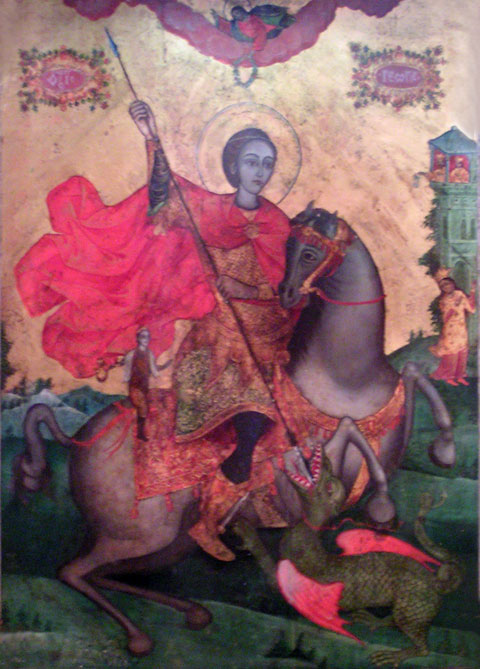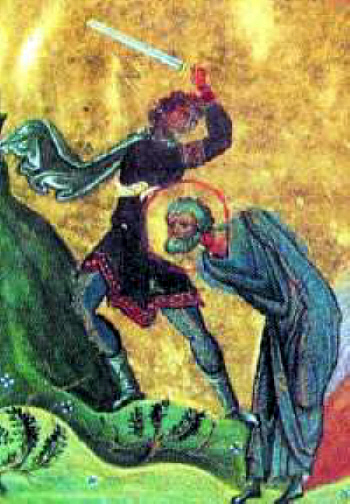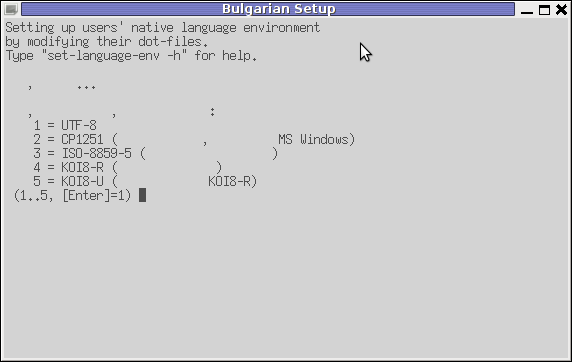![]()
I’m in pomorie monastery right now. Pityle pomorie’s monastery’s website can only be accessed in Russian and Bulgarian language.
Pomorie Monastery is named after the greatly honoured saint George, he is highy honoured here in Bulgaria as well as in many countries in the orthodox christian world, he is also venerated in some other non-orthodox countries one of which for instance is England.
Some of the monks here in the monastery used to say it’s St. George himself who invited me to the monastery for a blessing since I myself am named after the saint.
Many people from Pomorie and near Burgas’s region and even from afar are gathered to commemorate St. George’s Martyrdom and celebrate the Saint George’s day . It’s the second time I’m in Pomorie’s monastery which by the way is a Male monastery. I’m really happy that such a cloisters still exists in this troubles times in sense of spirituality.
The place is really peaceful and the fact that it’s georgraphically located near the sea makes it a must see destination if you’re visiting Bulgaria or travelling through the country.
The history of the monastery is also very interesting. Currently the brotherhood includes 6 monks. The monastery abbot is a really kind and gentle man and the brothers are united in comparison to the observed dividement between monks walking the way of salvation in spiritual abbeys nowadays.
The main reason people are coming on the feast of st. George is to beg for the prayer intercession of the Saint for us the sinners in front of God, that God has mercy and forgies our trespasses and have mercy on us.
Each eart Saint George takes place here in Bulgaria on Sixth of May (06.05) and is one of the greatest christian as well as secular celebrations in Bulgaria. The 6th of Many is also an official holidays within the country and the official feast of the bulgarian army.
St. George is considered one of the greatest Christian saints in the Orthodox, world and even more venerated in Bulgaria.
It’s a common practice in Bulgaria as well as in Greece that spiritual abbeys or Churches are named after St. George.
What makes St. George even more special for us the fact that the Bulgarian Orthodox Church possesses a whole monastery named after st. George located in Mounth Athos. You can read more about St. George (Zograf) Bulgarian Monastery located in Mount Athos here
St. George’s monastery in Mount Athos is named Zograf after a miraculous icon located in the Monastery which dates back to the 14th century.
![]()
Saint George Zograf Miraculous icon owned by Zograf’s Monastery – Holy Mount Athos
The Holy Lord has completed many miracles through the icon of st. George Zograf. Many people received physical or spiritual healing, whilst others has received according to their prayers when they approached the icon as great relic to honour God.An interesting fact is that Pomorie Monastery also possesses a great relic a miraculous icon of st. George

a miraculous icon of St. George Pomorie
In the center of Pomorie Monastery is located a Holy Fountain St. George. The wholy history of the monastery is related to the Holy Fountain.
According to bulgarian orthodox church tradition the Monastery was established by a Turkish bey in the 13th or 14th century. In that time the bay got an incurable sickness. He tried everything a man could try to get a relief or a cure. He went to a physician, he tried herbs, he tried going and praying to Allah in the mosque an imam praied over him to beg for Allah’s blessing and healing etc …
But nothing helped. One night the bey had a dream that a holy fountain is springing out of his house yard.
When he awoke from his sleep he went and digged on the same place where the holy spring has emerged. And oh miracle ! A spring emerged. He drinked from the water and got healed from his illness.
In the pit where he digged he found an image of St. George which is currently embedded in one of the walls of the tower of the holy spring in Pomorie’s monastery.
Afterwards the bey according to God’s revelation to establish Pomorie’s Monastery while all his family members accepted monastic life.
The bey has give away all hid possesseions (land, money) etc. to the monastery just established.
In the years since then the monastery has been destroyed once and rebuilt, many people has received a relief or healing while drinking from the Holy Fountain.
This year God has blessed the monstery even more abundantly. The abbot and one of the monks has temporary taken some Saint remains and brough them for pilgrimage in the monastery.
The saint remains are of St. John Chrysostom , St. Gregory the Theologian , st. Gregory Palamas
Some of the other relics which are available for pilgrimage in Pomorie monastery until 10th of May are st. remains of Glinsk elder hermits as well as

St. martyr Dasius who was tortured and slained here in Bulgaria for his faith in our Lord and Saviour Jesus Christ.





